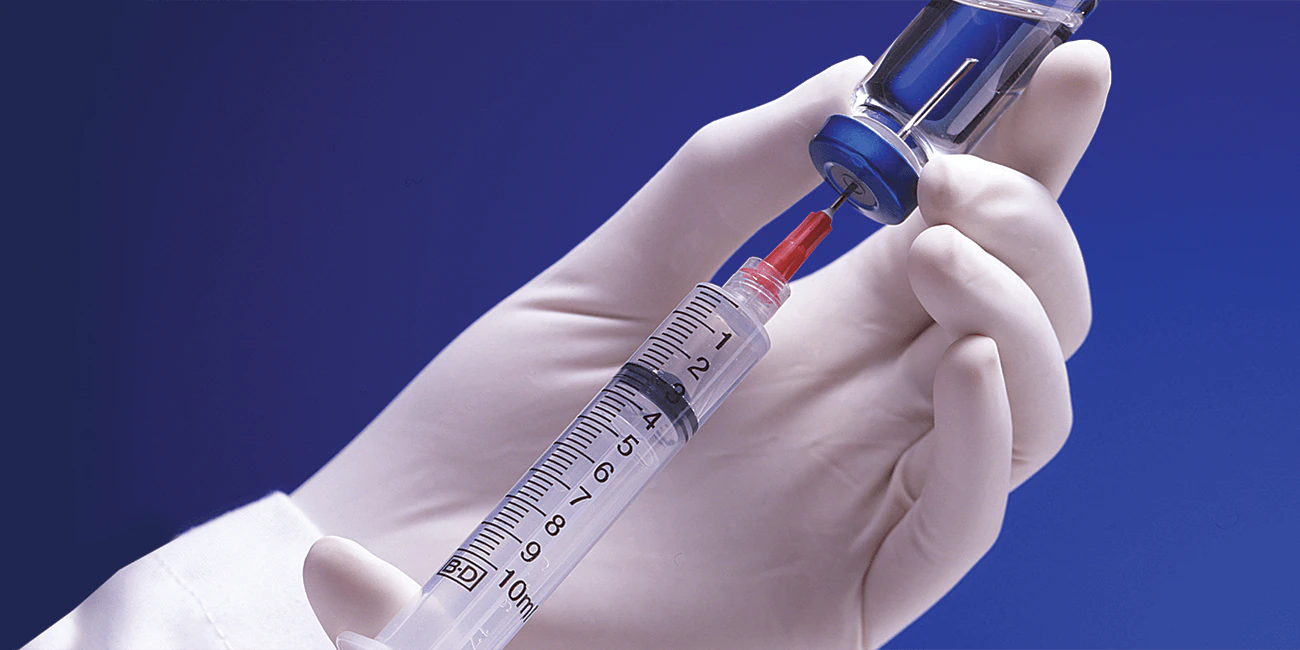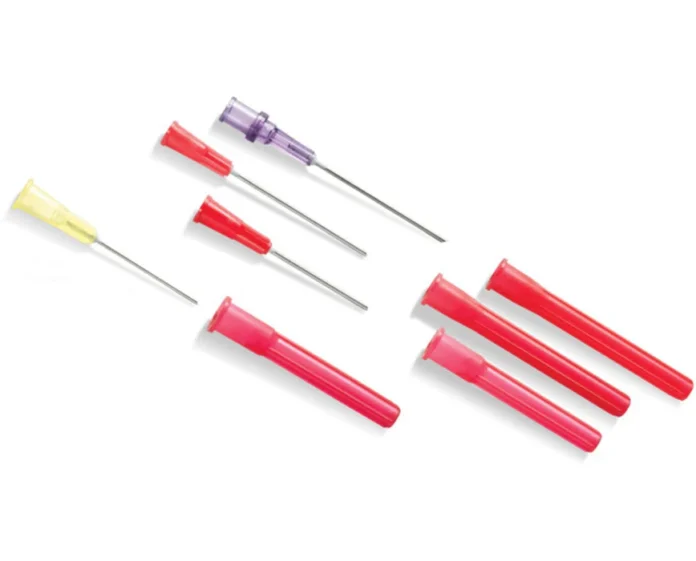In the fast-paced world of healthcare, ensuring the safety of medical professionals is just as important as providing care for patients. One of the most common risks faced by healthcare workers is the danger of needlestick injuries. These injuries occur when needles puncture the skin, potentially leading to the transmission of infectious diseases like HIV, Hepatitis B, and Hepatitis C. To address this issue, the self blunting needle was introduced—a groundbreaking innovation designed to minimize the risk of these injuries. This medical tool automatically blunts its sharp tip once used, providing a safer environment for healthcare workers.
The self blunting needle is revolutionizing the way needles are used in medical settings, ensuring that safety protocols are not just adhered to but improved upon. By implementing this technology, healthcare facilities can mitigate the need for manual safety measures after needle use, such as recapping or special disposal procedures. The automatic blunting mechanism reduces the chances of accidental injuries, ensuring that healthcare professionals, from nurses to lab technicians, remain protected from sharps exposure during routine medical procedures. In this article, we will explore the features, benefits, and applications of the self blunting needle, along with its impact on reducing needlestick injuries in healthcare environments.
What is a Self Blunting Needle?
A self blunting needle is a type of safety needle designed with an automatic mechanism that blunts its tip once it has been used. This feature helps eliminate the risk of accidental needlestick injuries, which can occur when a sharp needle remains exposed after use. Unlike conventional needles, which can stay sharp and pose a significant safety hazard, the self blunting needle’s design ensures that the sharp end of the needle is either retracted or covered by a protective shield immediately after the needle is withdrawn from the patient.
This automatic feature makes the self blunting needle a safer and more reliable option for medical professionals. The mechanism that activates the safety feature is typically a spring-loaded or retractable system, which engages as soon as the needle is removed from the body. This action effectively covers or blunts the sharp tip, providing peace of mind for healthcare workers who may be handling needles during busy shifts or under high-stress conditions. These needles are essential in environments where the risk of needlestick injuries is high, such as emergency rooms, surgical units, and clinics.
The Science Behind Self-Blunting Needles
The science behind the self blunting needle lies in its innovative design. When a self blunting needle is used, the mechanism inside the needle activates automatically. This could involve a retractable needle that pulls the sharp tip back inside the housing or a shield that covers the needle to blunt the tip. These mechanisms are typically spring-loaded, and once the needle is withdrawn, the spring causes the blunt safety feature to engage.
This technology prevents accidental injury by eliminating the risk of a healthcare worker being exposed to the sharp needle tip, which is often the primary cause of needlestick injuries. Research has shown that healthcare workers face an increased risk of contracting infections due to needlestick accidents, and the self blunting needle has been shown to significantly reduce the frequency of such incidents. By eliminating the exposure to sharp needles, these devices help protect medical staff and reduce the healthcare industry’s overall burden of preventable injuries.
Benefits of Self Blunting Needles in Healthcare Settings

The primary benefit of self blunting needles is their ability to drastically reduce the risk of needlestick injuries. These injuries can result in serious health consequences, especially if the needle is contaminated with bloodborne pathogens. By ensuring that the needle tip is automatically blunted or covered after use, self blunting needles remove the need for manual safety measures like recapping, which can often lead to accidental injuries.
In addition to the obvious safety benefits, self blunting needles also enhance compliance with healthcare regulations. Organizations such as OSHA and the World Health Organization (WHO) have strict safety standards for healthcare environments, particularly when it comes to handling sharps. Using self blunting needles in medical facilities can help institutions meet these safety standards and improve the overall safety culture within healthcare environments. Furthermore, this type of needle reduces the need for additional personal protective equipment (PPE), as the safety mechanism already provides a high level of protection.
Self blunting needles also contribute to reducing the administrative and legal risks associated with needlestick injuries. When a needlestick injury occurs, it often leads to costly medical tests, legal claims, and potential worker compensation claims. By adopting self blunting needles, healthcare institutions can significantly lower the risk of such incidents, ultimately saving money and maintaining a safer, more efficient workplace.
Applications of Self Blunting Needles
Self blunting needles are used across various medical procedures where sharp needles are typically required. These include common practices such as blood draws, injections, and intravenous (IV) infusions. Medical professionals who perform these tasks regularly, such as nurses, phlebotomists, and anesthesiologists, benefit greatly from the added safety of self blunting needles. These needles ensure that healthcare workers are less likely to experience accidental exposure to bloodborne pathogens, which is crucial in preventing infections.
In addition to their use in hospitals and clinics, self blunting needles are also suitable for home healthcare settings. As more patients manage chronic conditions or require regular injections outside of medical facilities, self blunting needles offer an added layer of safety for patients or caregivers administering treatments. Home healthcare workers, who may not always have formal medical training, can handle self blunting needles with less risk, promoting safer healthcare practices in non-clinical environments.
How to Use Self Blunting Needles Safely
While self blunting needles are designed to be safer than traditional needles, proper use is still crucial to ensuring maximum safety. Healthcare professionals should be trained on how to correctly handle these needles, including how to activate the safety mechanism, and how to dispose of the used needles properly. Immediate disposal of the used needle into a designated sharps container is essential in maintaining a safe environment.
It’s important that medical staff check to ensure that the self-blunting feature has engaged before discarding the needle. If the needle is not activated properly, it could still pose a risk. Additionally, healthcare institutions should provide ongoing training on the safe use of self blunting needles to ensure that staff members are up to date on the best practices for handling these devices and preventing injuries.
Potential Challenges and Considerations
Despite the many advantages of self blunting needles, there are some challenges that healthcare facilities may face when implementing them. One of the primary concerns is cost, as self blunting needles are often more expensive than traditional needles. Healthcare organizations operating on tight budgets may find it difficult to adopt these needles on a large scale, particularly in high-demand areas where the number of needles required is substantial.
Another consideration is the compatibility of self blunting needles with existing medical equipment. Not all procedures or devices are compatible with self blunting needles, which may require healthcare facilities to purchase additional equipment or modify existing systems to accommodate these safety devices. It’s important that medical institutions carefully evaluate their specific needs before switching to self blunting needles to ensure that they are the right fit.
Conclusion
The self blunting needle is an innovative solution that has significantly improved the safety standards in healthcare environments. By automatically blunting the needle tip after use, these needles reduce the risk of needlestick injuries and provide healthcare workers with an additional layer of protection. While there are some challenges to implementing this technology, the benefits of reducing injuries, improving regulatory compliance, and promoting a culture of safety far outweigh the drawbacks.
Healthcare institutions looking to improve safety protocols and protect their staff should seriously consider adopting self blunting needles. These devices offer a practical, cost-effective solution to a serious problem in medical settings, and their widespread use could lead to a future with fewer preventable injuries and better overall healthcare outcomes.
FAQs
- What is a self blunting needle, and how does it work?
- How do self blunting needles prevent needlestick injuries?
- Are self blunting needles more expensive than traditional needles?
- Can self blunting needles be used for all medical procedures?
- How should healthcare workers dispose of self blunting needles?
- Are self blunting needles as effective as traditional safety needles?
- What are the advantages of using self blunting needles in hospitals and clinics?
- Can self blunting needles be used in home healthcare?
- What is the process for ensuring the self blunting mechanism is activated correctly?
You may also read: Early Life and Family Background of Eileen Feinstein Mariano



